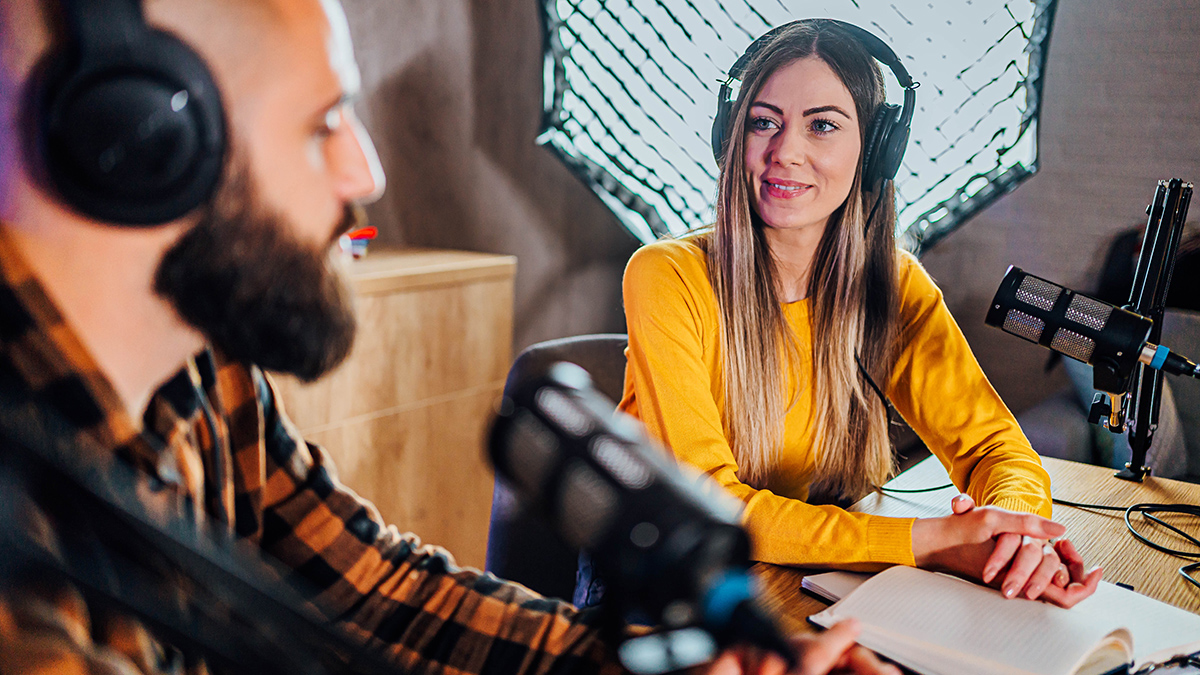“Sounding your best isn’t just a ‘nice-to-have’ - it’s necessary if you want listeners to make your show part of their daily routine”: The head of Audacity shares his top 5 tips for beginner podcasters
The man who leads development of the world’s most popular free and open-source audio editor offers his advice

There is a lot to love about starting a podcast but also a lot to figure out. With over 4.5 million podcasts already out there, making yours sound good enough to compete and stand out takes work.
New podcasters often run into the same handful of challenges: feeling overwhelmed by editing and production, figuring out how to attract and retain listeners, and finding ways to actually make money from their show.
Martin Keary, Head of Audacity and YouTube creator (you might know him as Tantacrul), knows these struggles well. He’s been on both sides of the mic - as a creator himself and as the lead behind the world’s most popular free app for recording and editing audio. Here, he shares five tips to help beginner podcasters get off to a stronger start.
1. Pace is everything
Pacing and flow are key to keeping listeners engaged. This includes how you speak, what information you choose to include (or leave out), and how you structure the episode.
With 68% of listeners tuning in from start to end, which is surprisingly high in today’s world of shrinking attention spans, strong pacing can make a big difference.
If you're scripting your podcast, practice reading your script aloud while writing. Adjust your phrasing so it feels natural in your own voice. Embrace what’s unique about your delivery, and let that shape your script.
For conversational podcasts, rehearse a few sessions with your co-host to build chemistry and develop a natural rhythm.
Want all the hottest music and gear news, reviews, deals, features and more, direct to your inbox? Sign up here.
During editing, be ruthless with your cuts - remove anything that's not essential, not funny, or unlikely to keep attention.
If you’re adding background music, make sure it enhances the pacing rather than competes with it.
2. Choose the right microphone for your style
The podcast microphone you use should suit the kind of podcast you're making.
For live or dynamic conversations, dynamic mics are often ideal - they're less sensitive and perform better in untreated rooms.
For intimate, narration-style podcasts, condenser mics bring out clarity and nuance. Just note that they are very sensitive, so you’ll need a quiet and acoustically treated space.
Not sure what to choose? YouTube is full of excellent reviews and mic shootouts to help you find the right fit for your setup and budget.
3. Tame mouth noise and room reflections
If you want cleaner audio, start with your space. To reduce reverb, surround your recording area with soft materials - acoustic panels, heavy curtains, or even duvet tents - can work wonders. Pay special attention to the walls behind and in front of you, as that’s where reflections hit the mic hardest.
For mouth noise, hydration is your friend. Drink water at least an hour before recording. Avoid too much coffee (it dehydrates), and try rinsing your mouth with coconut oil (before recording) or using gum (during recording) to reduce clicks and mouth sounds.
4. Use processing tools to improve your sound
Considering that almost half of monthly podcast listeners now tune in daily (up from 29% five years ago), podcasts are clearly becoming part of people’s daily habits. This means sounding your best isn’t just a nice-to-have - it’s necessary if you want listeners to make your show part of their daily routine.
Post-production can bring your voice to life. At a minimum, use EQ (to balance frequencies), a de-esser (to tame harsh "S" sounds), and a mastering plugin (to polish the final mix).
If you're ready to go beyond software, a hardware chain like Mic > Compressor > Preamp > Audio Interface can give your voice professional warmth and consistency. There are plenty of tutorials on YouTube to help you find a setup that fits your budget and goals.
5. Marketing and social media (the dark art)
As the industry's leaders point out, discoverability is still one of the biggest challenges for podcasters. Promotion is tricky, but not impossible.
The most effective way to market your podcast is to choose topics where you bring something unique – whether that’s humour, insight, storytelling, or expertise.
Make sure your show is accessible to newcomers, even if you’re covering niche topics. With advanced translation tools evolving rapidly, your podcast has the potential to reach listeners around the globe, so keep that broader audience in mind as you plan your episodes.
If possible, film your sessions and repurpose short clips for YouTube and social media. Nearly half of podcasts listeners discover new shows through social media recommendations, so these channels are key to expanding your reach.
Another proven tactic? Interviewing well-known or influential guests. Their name recognition can bring in new listeners - and if they share the episode with their own audience, you’ve got a great visibility boost.
In the early days, try anything you can to promote your podcast. However, be honest with yourself, too - if something isn’t working, review it and don’t be afraid to let it go. Experiment. Podcasting is a long game - and with the number of listeners growing fast around the world (already more than 584 million!), there has never been a better time to get creative.

As Head of Software at Muse, I oversee and mentor teams responsible for our musical creation products, including MuseScore Studio, Audacity, Audio.com and MuseSounds. My responsibility is to ensure that our products grow to reach new audiences, providing free tools that compete with the best paid offerings on the market. It’s a role that requires a fine balance between big-picture strategic thinking and attention to the intricate details that make each product stand out.
You must confirm your public display name before commenting
Please logout and then login again, you will then be prompted to enter your display name.